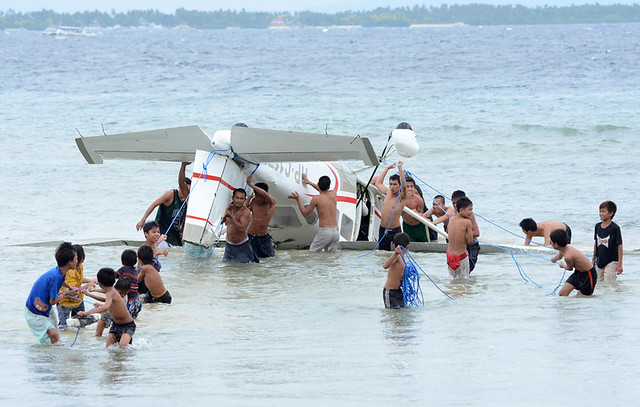Zest Air opens skies for more Filipinos
Barely three years since the group of juice magnate Alfredo M. Yao took over the former Asian Spirit Airlines, budget carrier Zest Airways (Zest Air) is taking the local airline industry by storm.

The Forbidden City in Beijing
While others chose to remain conservative in their strategies amid fuel cost pressures, Zest Air continues to fly above the turbulence with its aggressive re-fleeting and route expansion efforts. This is all part of its long-term plan to take a more major role in the budget airline industry.
"We are committed in serving our passengers the best way we can," said Mr. Yao, who serves as Zest Air’s president and chief executive officer. "We want our passengers to keep flying with zest when they travel on board our planes. We want them to keep coming back.
"We are currently expanding our fleet so we can provide our passengers with more flights going to their favorite destinations. As we do this, rest assured, we will stay focused on our passengers’ needs and comfort."
In a statement, Mr. Yao said Zest Air currently has a fleet of five Airbus A320s, and one Airbus 319, which the airline acquired last October.
"The aircraft has a commodious cargo hold equipped with large doors to assist in expedient loading and unloading of goods. It provides customers with added space and comfort, has reduced noise levels in the community we serve and allows Zest Air to operate a more cost-efficient and reliable fleet," he said.
Mr. Yao added that Zest Air has four Modern Ark 60s, an advanced 56-seat class regional turboprop aircraft developed by Xi’an Aircraft Company of China Aviation Industry Corp.
"Characterized by remarkable passenger comfort, operational adaptability and low operating cost, the MA60 is suitable for frequent short- and medium-haul commuter operations as well as multi-role applications," he said.
"The MA60 can meet the increasingly demanding needs of modern transport and offer operators with the greatest operating benefits," he added.
Mr. Yao said Zest Air plans to acquire two more Airbuses and two B-777s by the second half of the year for its long haul flights to the Middle East by the third or fourth quarter of 2011.
Zest Air flies to 20 Philippine destinations. It flies five times daily to Cebu and twice daily to popular stops such as Bacolod, Davao, Iloilo, Tacloban, Tagbilaran and Puerto Princesa. Zest Air also has regular flights from Manila to Boracay, Legazpi, Busuanga, Calbayog, Catarman, Kalibo, Masbate, Marinduque, La Union and Mindoro.
There are also Zest Air flights going to and from Kalibo, near Boracay Island, home of the famous white sand beaches that draw local and international travelers. Zest Air has international flights to Kalibo that take passengers from Incheon and Pusan in South Korea and from Shanghai, China.
In addition, Zest Air also flies from Cebu to Incheon, South Korea. The province of Cebu is home to many of the country’s most famous landmarks, including the Lapu Lapu Shrine, Magellan’s Cross, and the Cebu Taoist Temple.
Zest Air said in a statement that it will use its newly acquired aircrafts to increase the frequencies of its international routes.
Zest Air’s Cebu-Incheon service, which currently flies twice a week, will become a daily service starting June 20.
The Kalibo-Incheon route will also be daily starting June 20, up from the current four-times-a-week frequency, while the Kalibo-Shanghai route will double to four times a week starting June 25, from the current frequency of twice a week.
Zest Air announced that it will have a new Kalibo-Beijing, China flight starting June 26. The airline is also currently mulling flights from Kalibo to Taipei, Taiwan, and Puerto Princesa to Incheon.
"More international destinations will be opened in the near future. It won’t be long before passengers from such places as Taipei, the Republic of Palau, Singapore, Bahrain and Dammam get their chance to fly direct to many of the Philippines’ best tourist destinations," Zest Air said.
The airline noted that it has taken great pains to focus on customer service.
"[Our] flight attendants are friendly and ready to address the needs of tourists and business travelers," Zest Air said.
"At Zest Air, the staff makes sure that passengers are treated like kings and queens. Overhead compartments afford passengers ample space to stow away their bags. Seats are comfortable and the aisles are very spacious. Even toilets are such that they would probably make passengers feel right at home."
In addition, the airline announced that it recently established a partnership with Ace Insurance Group to provide travel insurance at reasonable rates. Zest Air passengers can now avail themselves of travel insurance from Ace Insurance. Insurance premiums cost P180 (one way) and P245 (round trip) per passenger.
BY JEFFREY O. VALISNO
Courtesy Of: Business World












